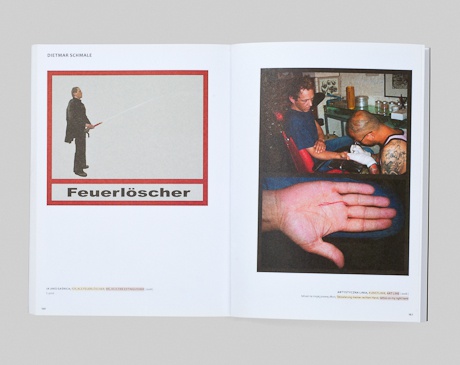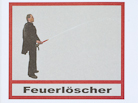‘Poland — Germany 4:6’ catalogue summary of exhibition

year of publication: 2009
size: 17 × 23,5 cm
volume: 184 pages
edition: 500 pieces
binding: softcover
reproductions in colour
languages: Polish/English/German
graphic design and typesetting: Katarzyna Goczoł, Magdalena Piwkowska
publisher: BWA Contemporary Art Gallery in Katowice
ISBN 978-83-88254-54-3, 978-3-939812-14-2
Contents:
Marta Raczek ‘Football Poker’
Elżbieta Kościelak ‘State of the future world’
Eulalia Domanowska ‘Physical Sorcery’
Marta Raczek
Jola Bielańska ‘Leszek Lewandowski and the Theory of Interrupted Balance’
Wilhelm Werthern ‘No Picnic. Wherever. On Wiebke Bartsch’s Art’
Martin Rehkopp ‘On the Earnestness of the Game’
René Hirner ‘Interpretation of Space’
Martin Rehkopp ‘On great and small things, or on the compatibility of differences’
Martin Rehkopp ‘Who will control the controllers?’
Lisette Pelsers
Martin Rehkopp ‘Paternoster’
Martin Rehkopp ‘Epilogue’
Price: 5 zł (about 1,5 euro)
Visit our bookshop or order by e-mail:
ksiegarnia@bwa.katowice.pl

Poland — Germany 4:6 — group exhibition of Polish and German artists The exhibition ‘Poland —Germany 4:6’ was thought as an artistic dialogue with which the history and the present day of Polish-German relations can be told. The...

The publication features works by Polish and German artists who participated in the exhibition “Poland — Germany 4:6”: Marcin Berdyszak, Jacek Jagielski, Kamil Kuskowski oraz Leszek Lewandowski. Po stronie niemieckiej: Wiebke Bartsch, Jupp Ernst, Carsten Gliese, Anja Jensen, Dietmar Schmale oraz Sabine Swoboda.
‘(…) A set which is comprised mainly of attacking midfielders, called also halfbacks — that means players whose function it is to play the ball and enable a direct shot at goal — is comprised of installations, objects, and paintings referring directly to the Polish-German conflict, usually in a version reworked previously by cultural imagery. One of the examples is Kanał (Sewer) — Leszek Lewandowski’s object that refers to Andrzej Wajda’s film under the same title. Wajda’s film deconstructs heroic episodes from Polish history of the Second World War. Many scenes in the film show the hopelessness of the uprising, such as the one in which a group of insurrectionists leave the sewers to face the German barrels aimed straight at them. The sewers are not a way to escape but a grave; it is also an important lesson of historical pragmatism, which is useful not only in the times of war. Another work concerned with Polish-German conflicts is the set of paintings by Kamil Kuskowski summarizing the story of the military and football clashes of the two nations. Struggle and violence is also the subject of Wiebke Bartsch’s environment. Although the issue is presented in relation to private sphere, the analysis is universal in its reference. The artist shows that violence usually starts in our nearest surroundings, and the psychological store of childhood experiences influences our grown-up life; conflict becomes constitutive factor substituting harmonious coexistence with others. (…)’
Marta Raczek ‘Football Poker’
fragment




